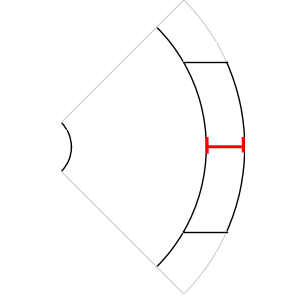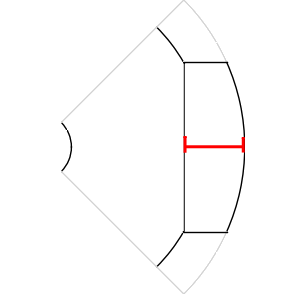Magnet thickness
The magnet thickness is a geometry template parameter in Emetor that defines the thickness of the permanent magnets in their middle.
The magnet thickness is generally defined in the middle of the magnet, see Fig. 1. This is especially relevant for breadloaf magnets, where the magnet thickness on both magnet sides can be much lower than the value provided in Emetor. If the magnet thickness is not sufficiently large, some designs with breadloaf magnets, depending on the magnet angle, might not be feasible.


Fig. 1 Example of magnet thickness definition for two different rotor templates: Inner rotor with parallel magnetized magnets (left, does also apply for radially magnetized magnets), and inner rotor with parallel magnetized breadloaf magnets (right).
The magnet thickness is a main parameter in permanent magnet machine design due to its influence on the magnet operating point. Normally, thicker magnets are preferred since they increase the power density of the motor. Thicker magnets are generally also less prone to demagnetization. However, due to the fact that permanent magnets can be very expensive, a good permanent magnet machine design often results in a reduced magnet thickness in order to reduce the cost of the motor. However, you should be aware that the handling and manufacturing can become extremely difficult for very thin magnets. As you can see from these short consideration, an appropriate selection of the magnet thickness is a key factor for the design of permanent magnet machines.
Read about another glossary term
